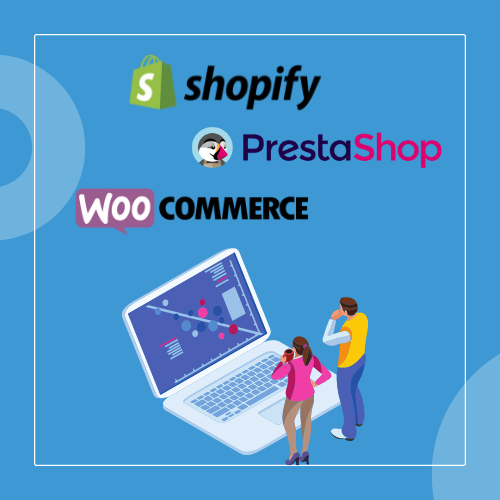In e-commerce, every detail counts in attracting and converting web users into customers. The product sheet therefore plays a key role in conversion, presenting users with comprehensive information that will encourage them to buy. Shopify CMS offers a wide range of options for completing your product sheets. In this article, we explore best practices and tips for creating effective, high-converting product sheets.
Writing a catchy title
The first visible element of a product is its title, which is what the user clicks on in the product listing to view the product.
The title also corresponds to the H1 tag, which is an element read by search engine spiders to understand what the page is about.
In the "Title" field of your Shopify product, write a title that is sufficiently descriptive, clear, concise and contains the main keyword you're targeting.
Provide a convincing description
On an e-commerce site, the product sheet is the only point of contact between the user and your product. It is therefore essential to offer an exhaustive description which indicates the features, benefits and context(s) of use of your product.
If it has technical specifications, these can be presented in the form of bulleted lists for greater clarity.
The product description must be conceived as a sales pitch and written from a marketing angle to enable the web user to project himself into the use of the product. It should be long enough (300 words minimum) and unique, so avoid copying and pasting information from another website.
On Shopify, complete the description in the "Description" field of the product page. The text editor allows you to modify the formatting (size, bolding, font, adding links) as well as integrate H2 and H3 tags, which are ideal for structuring your content.
Show your product
In addition to the description, the other way to highlight your product is tointegrate quality photos. Include images of the product from different angles and in different settings to show the product from every angle. On Shopify, simply add these images to the "Multimedia" section.
Pay attention to image weight and format, and don't forget to complete the Alt tags for each image so that search engines can read your images.
The video is also an excellent way of showing your product in action: demonstrations, unboxing, customer reviews... a wide range of subjects can be covered in a video about your product! What's more, this interactive format helps to keep visitors engaged with your product, by increasing the amount of time they spend on the page.
Integrating reinsurance elements
If the user now has all the information about the product they need, they should now see elements that reassure them about the reliability of your site and the services offered on your Shopify store.
Clearly indicate on the product sheet reinsurance elements such as warranty period, return policy, delivery time, certifications or labels associated with the product. Use attractive icons and pictograms above the waterline to maximize their visibility.
Another way to reassure your users is tointegrate customer reviews on your product sheets These reinforce the credibility of your Shopify store. Most often displayed as a star, you can click on the rating to read the verbatims of customers who have already purchased that product. On Shopify, product reviews are available on the Shop channel or via the addition of an application offering this functionality.
Structuring the product sheet
The different components of your Shopify product page must be clearly distinct and logically structured, both for the user experience (UX) and for SEO. Separate information into distinct sections and use attractive, clear action buttons, paying particular attention to the valuable Add to Cart button!
If your product has variants such as sizes or colors, enter them in the "Options" and "Variants" sections of the back office. This gives the user a quick overview of all the options available for the product in question.
In order to capture the user's attention, you can also propose a selection of complementary products (cross-selling) and premium products (up-selling).
Optimizing your product page for SEO
To optimize the natural referencing of your product on Shopify, don't forget to take care of the url of the product file and to fill in the title and description metas: these are the first textual elements relating to your product that will be visible in search results. You can complete this information when editing the product sheet, by viewing the final rendering.
Within your product page, don't hesitate to add internal links to other pages in your store: this allows you to work on internal linking, a key criterion for SEO.
As a child, make sure your Shopify product sheet is mobile-friendly: mobile is generally the first device used for browsing, so don't lose out on this not inconsiderable audience potential.
Need support?
Here are a few tips you can apply today to optimize your Shopify product listings. If you'd like to learn more, contact us to fine-tune your Shopify digital strategy!






